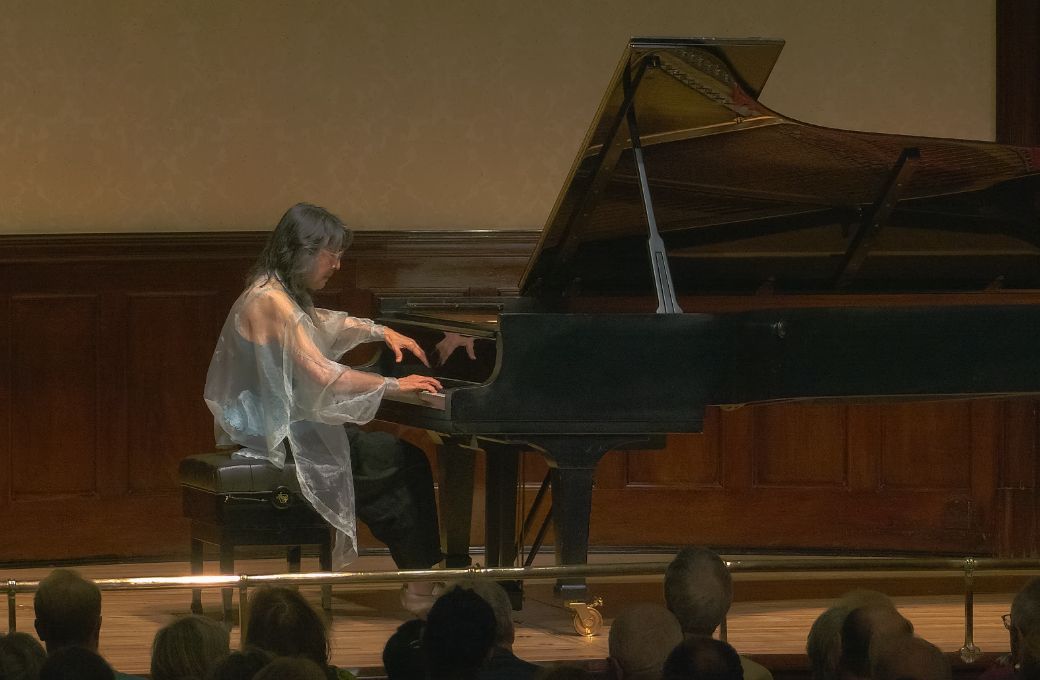Dame Mitsuko Uchida commanded a fully sold-out Wigmore Hall on Sunday evening to play Beethoven’s last three piano sonatas, giving us a masterful glimpse of the late style of the German master.

The Piano Sonata no. 30 in E major, Op.109, opened with its characteristically cheery and flowing melody, with the contrast between the airy, consonant opening and the tense, dissonant second theme clearly accentuated. The tuneful Prestissimo second movement bristled with energy, the rhythm at once appearing dancelike yet too fast to dance. The centrepiece of the sonata, the finale, was the highlight: the portly eight-bar theme was subjected to six variations, each of them unmistakably related to the original statement yet unique in their own ways. Uchida masterfully drew out the smallest details of the theme, from its fleeting notes to the doleful sonority that closes the theme in a half cadence. The fugue in the fifth variation hearkened back to Beethoven’s Baroque predecessors, and the flawless trills in the final variation brought the work to a climax, ending in the bare simplicity of the unadulterated theme.
The first movement of the A flat major sonata, Op.110, alternates between a simple, lilting motif and shimmering arpeggios in all registers. Articulation and clarity were excellent here, and Uchida’s clear familiarity with the architecture of the piece highlighted the contrasting nature of the movement. The Scherzo, at once rapid, disjunct, and jarring, was executed with nimbleness and staccato precision, bringing out the ‘rough edges’ of the piece. The poco ritardando at the end of the movement was taken liberally, allowing the arpeggiation of the final chord to resonate throughout the hall. The third movement is a contrapuntal masterpiece: the unusually titled Arioso dolente section was indeed sorrowful, while the fugues that followed it once again showcased the crystal-clear precision of Uchida’s playing. The long crescendo and shortening of rhythms into fortissimo arpeggios at the jubilant end was played in a way to make it seem inexorable, exactly how it should be.
After the interval, Uchida returned to play Beethoven’s final sonata, Op.111 in C minor. Stormy, agitated and embodying the spirit of Romanticism, the first movement’s double-dotted rhythms and abounding diminished chords thundered through the hall in Uchida’s masterful rendition. The Allegro section, by far the most technically challenging part of the entire programme, was played flawlessly, a feat of technical brilliance. The pianissimo finish set the stage for the sprawling, 20-minute second movement, another theme and variations so ambitious in scope that no third movement could follow it. Each successive variation on the theme brought increased rhythmic and contrapuntal complexity, and the infamous syncopated variation that Uchida has on occasion referred to as foreshadowing boogie-woogie was appropriately jocular, all the while maintaining Beethoven’s unmistakable style. The combination of trills, arpeggios and both slow and fast melodic lines in the final variation are a truly unique moment in the piano literature, showcasing Beethoven’s revolutionary innovation. Uchida brought a lifetime’s worth of study to her performance; after having ascended to the highest of heights, the descent back down to a serene pianissimo finish was a befitting close to the sonata and to the evening.


